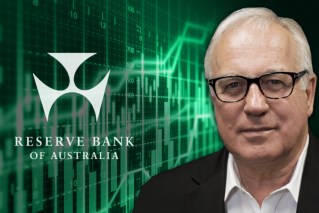The Stats Guy: Innovation, investments, demographics: Can Millennials sustain Australia?


Image: Getty
The future is annoyingly hard to predict, but by combining demographics and other big picture trends we can at least give our predictions a strong, data-driven foundation. Today we will be thinking about how innovative Australia might be a decade from now.
There are two basic theories regarding when humans are innovative.
The first theory argues that we innovative under pressure, in extreme situations, when we free ourselves from artificial constraints and regulations. The second theory says we need to have enough spare time available, that we innovate best when we are not constrained by financial concerns and external pressures. These two theories don’t help us much as they describe mutually exclusive scenarios.
Let’s look at the financial aspect of innovation then. Any new business idea, software or startup needs cash. Can demographics forecast the future funding landscape in Australia? Let’s try!
Funding innovations can be outrageously lucrative. Just imagine having been an early-stage investor of Google, Microsoft, or local champions like Canva. These investments obviously turned out well, but they were very risky. All our current tech giants could easily have died early on, and investors would have lost their money. Without buckets of money innovation won’t happen.
Demographically speaking, past innovations were bankrolled by the huge and wealthy Baby Boomer (born 1946-63) generation. More recent innovations were partly funded by the small Gen X (born 1964-81) cohort. Currently, over 87 per cent of all shares (by value) are owned by people over the age of 45. The over 55 cohort owns 55 per cent of all shares. The average portfolio in Australia will become increasingly conservative in its strategy since it’s unlikely that Boomers and Gen Xers will have any appetite for risk moving forward.
Upon reaching your mid-50s your financial adviser will progressively de-risk your portfolio. This means the wealthiest generations will increasingly seek safe investments. Innovative, unproven technologies are hardly what these cohorts will be after.
Demographically speaking, this leaves Millennials (born 1982-99) to bankroll future innovations, startups, and aim to finance the next unicorn.
Sounds easy enough. After all, Millennials are the largest generation in Australia and the cohort aged 35 to 50 will grow by a massive 850,000 people over the next ten years.
There is a major problem though.
Millennials are now reaching the family formation stage of the lifecycle. As Millennials add 1.7 kids to their households, they outgrow their inner-city apartments and homeownership becomes their number one goal. Housing of course is outrageously expensive, and Millennials use every extra dollar to save for a down payment.
As property gobbles up more and more money, precious little is left over to be invested into stocks or startups. Yes, there are plenty of Millennials but their money is unlikely to flow into innovative investments. There is a little hope though. At least in theory, Millennials could invest their superannuation into Australian innovation. It will be up to funds to provide investors with such options.
Australia’s winning formula
The coming decade is forecast to see strong population growth in the 20-something cohort (at least if we take Treasury’s forecasts as gospel). The data shown in the chart above might, as I argued previously, overestimate population growth in the 20s a bit. In either case, young people don’t have all that much money to invest. The majority will actually carry education-related debt – it’s at least a little ironic that tertiary education contributes to an investment climate that hinders innovation.
Of course, Baby Boomers and Gen Xers will not completely de-invest from anything smelling like progress or innovation, but the investment profile of Australia will look more conservative than in the past. If that turns out to be correct, would Australia still be an attractive country? Will we fall behind?
Australia will likely be just fine. Our very simple business model will continue to work: We sell stuff we grow on the ground (agriculture) or dig out of the ground (mining). On top of that we educate international students for (rather high) fees and entertain visitors (tourism). Global demand for our offering will persist and we will conclude yet again that Australia truly is the lucky country.
Demographer Simon Kuestenmacher is a co-founder of The Demographics Group. His columns, media commentary and public speaking focus on current socio-demographic trends and how these impact Australia. Follow Simon on Twitter or LinkedIn for daily data insights in short format.








